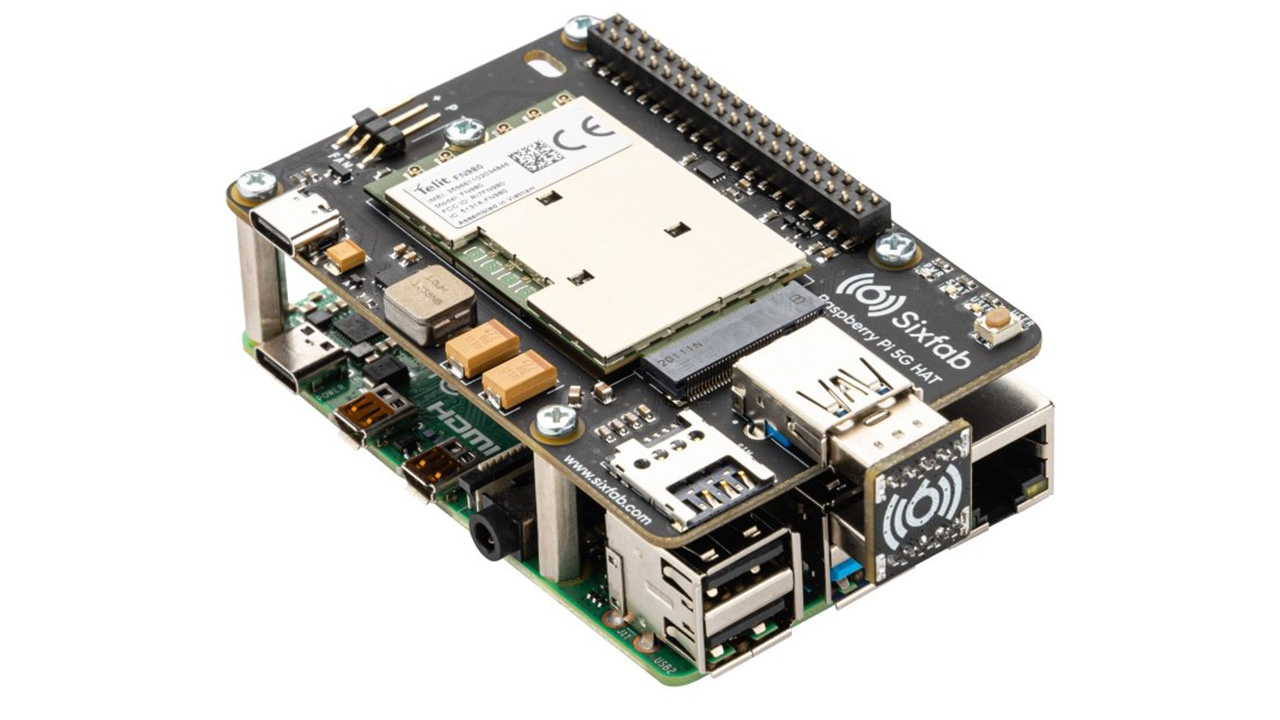Raspberry Pi HAT Brings 5G To Your Projects
A 5G modem HAT for the Raspberry Pi 4 is available for preorder from manufacturer SixFab.
No, no, no, this isn’t a fifth-generation Raspberry Pi, no matter how appealing that thought is, it’s a 5G development module allowing your Raspberry Pi 4 (or compatible) board to communicate via the new high-speed cell data network. Credit to CNX Software for discovering it.



The developmental add-on, from SixFab, takes the form of a HAT and enclosure, and connects to one of the Pi’s USB 3.0 sockets. The HAT contains an M.2 port, which can be optionally stuffed with either a Quectel RM50xQ 5G sub-6GHz modem with up to 2.5 Gbps downlink and 900Mbps uplink, or a Telit FN980 5G sub-6GHz and mmWave modem with up to 5.5 Gbps downlink and 1.5 Gbps uplink (limited to 5Gbps/1Gbps).
Oddly, you don’t get to choose which modem you get if you buy it as a kit, but you can also buy the board, casing and antennas on their own and use your own M.2 5G modem, should you have a spare laying around. The kit will cost $595 with a modem, and $175 without. It doesn’t come with a Raspberry Pi 4 board, which may be a problem considering the current shortage.
Looking rather like an upside down Star Wars AT-AT walker or drone, the devkit sports four antennas on the outside of its casing, which keeps both the Pi and HAT safely inside, visible through a clear plastic lid with a vent for its cooling fan. SixFab also makes 4G LTE and 3G hats for Raspberry Pi, but was beaten to the 5G crown by Waveshare, whose rather larger 5G kit has offered 4 Gbps (DL) / 500 Mbps (UL) since Fall 2020. It sells for $357 without the Pi board.
Described as “a comprehensive 5G toolset to develop, optimize and test your MTC/M2M projects,” SixFab’s 5G HAT can also work as a standalone 5G dongle connected over USB, extending compatibility to things like the Nvidia Jetson and just about anything that can run Windows or Linux, as these are the operating systems supported by its drivers.
Get Tom's Hardware's best news and in-depth reviews, straight to your inbox.

Ian Evenden is a UK-based news writer for Tom’s Hardware US. He’ll write about anything, but stories about Raspberry Pi and DIY robots seem to find their way to him.
-
rma153 The USB interface between the HAT and Raspberry Pi still requires the old Linux driver AT commands (ugh). I'll wait for an GIG Ethernet interface to be made available on these HAT solutions and the Waveshare/Nano solutions.Reply